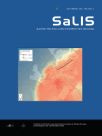
A Contemporary Review of Deficiencies Associated with Calculated Tidal Datums and Property Ownership Law
Coastal boundaries are in continual contention due to increasing population and increasing land values while the zone is exposed to increased risks from storm surge, sea level rise, and pollution. Property stakeholders since the beginning of the twentieth century have sought judicial
clarifications of boundary ownership between exposed and submerged coastal ground. Judicial clarification involves definitions that use mean high or mean low tide determined by some form of technical methodology. The early twentieth century court ruling of Borax v. Los Angeles (296
U.S. 10, 1935) was not the first case to do so, though it is widely considered as the inflection point where the court shifted from defining coastal boundaries in generic terms to setting concrete, scientifically based locations of the tidal boundary. While many lawyers and land surveyors
agree that the Borax ruling is flawed, it has become a foundation in such consideration of costal boundaries by the courts in many states. One compelling unanswered question stemming from the Borax case is whether Borax fills the knowledge gap between legally defining
the seaward property boundary and a reasonable surveyor being able to locate it on-the-ground?
Keywords: BORAX V. LOS ANGELES; CLIMATE CHANGE; MEAN HIGH TIDE; SEA LEVEL RISE; STATE SUBMERGED LANDS; TIDAL BOUNDARY; WATER BOUNDARY
Document Type: Research Article
Publication date: 01 June 2011
- Access Key
- Free content
- Partial Free content
- New content
- Open access content
- Partial Open access content
- Subscribed content
- Partial Subscribed content
- Free trial content